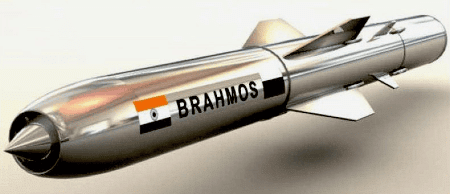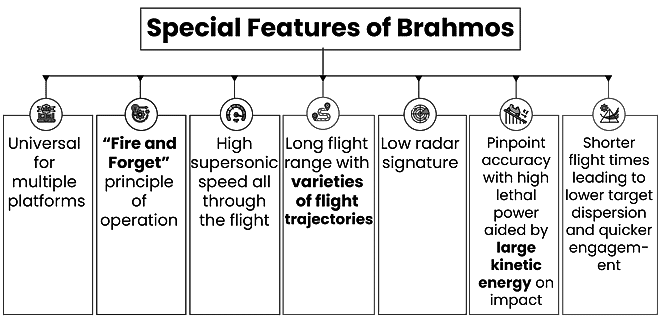Internal Security - 2 | Current Affairs & Hindu Analysis: Daily, Weekly & Monthly - UPSC PDF Download
| Table of contents |

|
| INS Jatayu in the Lakshadweep Islands |

|
| DefConnect 2024 |

|
| Exercise MILAN 2024 |

|
| Left-Wing Extremism |

|
| India’s Defence Exports |

|
INS Jatayu in the Lakshadweep Islands
Why in news?
The commissioning of INS Jatayu, an upgraded naval base in the Lakshadweep Islands, marks a significant development in India’s maritime security strategy, particularly in light of increasing Chinese influence in the Indian Ocean Region. Furthermore, the Indian Navy has inaugurated its first MH-60R multi-role helicopter squadron, Indian Naval Air Squadron (INAS) 334, at Kochi, enhancing its capabilities for rotary operations and anti-submarine warfare.
Key Highlights of INS Jatayu
- INS Jatayu, previously known as Naval Detachment Minicoy, has been established as an enhanced naval base on Minicoy Island within the Lakshadweep archipelago.
- The base will function under the operational supervision of the Naval Officer in Charge (Lakshadweep), part of the Southern Naval Command.
- This facility expands the Indian Navy's operational reach in the Indian Ocean, reinforcing its capabilities in anti-piracy, anti-narcotics, and surveillance missions.
- Strategically located in Minicoy, the southernmost atoll of Lakshadweep, INS Jatayu has a commanding view of key Sea Lines of Communications (SLOCs), enhancing India's maritime presence in the area.
- In response to China's growing presence in the Indian Ocean, INS Jatayu strengthens India’s ability to maintain maritime dominance and protect its territorial integrity.
- This naval base is India's second in Lakshadweep, following the commissioning of INS Dweeprakshak in Kavaratti in 2012.
- INS Jatayu will be equipped with necessary infrastructure, including an airfield and housing for personnel, to support naval operations and ensure comprehensive security coverage.
- Minicoy Island, home to INS Jatayu, is situated at the crossroads of important SLOCs, such as the Eight Degree Channel and the Nine Degree Channel, making it vulnerable to maritime pollution from heavy traffic.
- The Eight Degree Channel separates Indian Minicoy Island from the Maldives, while the Nine Degree Channel divides Minicoy from the rest of the Lakshadweep archipelago.
Key Highlights of the INAS 334 Squadron
- The Indian Naval Air Squadron (INAS) 334 is the inaugural squadron for the MH-60R helicopters, popularly known as the "Seahawks."
- This squadron was officially commissioned at INS Garuda, located in Kochi.
- It forms part of a larger 24-aircraft Foreign Military Sales (FMS) agreement made with the United States government in February 2020.
- The MH-60R Seahawk, a maritime adaptation of the Blackhawk helicopter, is designed for multiple roles, including:
(a) Anti-submarine warfare
(b) Anti-surface warfare
(c) Search and rescue operations
(d) Medical evacuation
(e) Vertical replenishment - The deployment of Seahawks in the Indian Ocean Region (IOR) enhances the Indian Navy's maritime presence, deterring potential threats and ensuring a secure environment in this strategically important area.
DefConnect 2024
Why in News?
Recently, the Ministry of Defence organized DefConnect 2024, which focuses on fostering innovation, entrepreneurship, and self-reliance in defense production. This event serves as a significant platform for showcasing the latest developments in defense technology, promoting collaboration between public and private sectors, and encouraging investments in defense startups.
What are the Key Highlights of the DefConnect 2024?
- Technology Showcase: The event features a technology showcase organized by iDEX-Defence Innovation Organisation (DIO), where various startups display cutting-edge innovations in fields such as Artificial Intelligence, Robotics, Cybersecurity, Unmanned Aerial Vehicles, and Wearable Technology. This showcase highlights the potential of the Indian innovation ecosystem in contributing to defense technology.
- Panel Discussions: DefConnect 2024 includes panel discussions addressing key topics related to defense innovation and entrepreneurship. These discussions offer insights into the Indian defense landscape, future trends, opportunities for startups, and strategies to enhance diversity and inclusion in the sector.
- Felicitation of Women Entrepreneurs: In honor of the contributions made by women entrepreneurs in the defense innovation ecosystem, DefConnect 2024 hosts a special ceremony to recognize women entrepreneurs associated with iDEX.
- iDEX Internship Program: To nurture young talent and prepare the next generation of innovators, DefConnect 2024 launches a rolling internship program under the iDEX initiative. This program aims to provide hands-on experience and mentorship to aspiring innovators in defense technology.
- Launch of Initiatives: The event also witnesses the launch of multiple initiatives designed to promote innovation and self-reliance in defense production, including the ADITI (Acing Development of Innovative Technologies with iDEX) Scheme and DISC 11 (Defense India Startup Challenge). These initiatives reflect the government's commitment to creating a vibrant defense innovation ecosystem.
What is Acing Development of Innovative Technologies with iDEX (ADITI) scheme?
- About: The ADITI scheme, with a budget of Rs 750 crore for the period 2023-24 to 2025-26, is part of the iDEX (Innovations for Defence Excellence) framework under the Department of Defence Production (DDP), Ministry of Defence. Under this scheme, startups can receive grant-in-aid of up to Rs 25 crore for their research, development, and innovation projects in defense technology. This initiative aims to foster youth innovation and propel the country forward in technological advancements.
- Objective: The goal of the ADITI scheme is to develop approximately 30 critical and strategic deep-tech technologies within the specified timeframe. It also aims to create a 'Technology Watch Tool' to align the expectations and requirements of modern Armed Forces with the capabilities of the defense innovation ecosystem.
What is the Significance of State of the Art Technology in Defence?
- Strategic Advantage: Advanced technology offers a strategic edge to nations regarding their defense capabilities. Innovative weaponry, surveillance technology, communication networks, and cyber capabilities can significantly enhance a country's ability to deter threats and safeguard its interests.
- Operational Effectiveness: State-of-the-art technology enables military forces to function more efficiently and effectively. This includes precision-guided munitions and advanced reconnaissance systems, all contributing to mission success while minimizing collateral damage.
- Adaptability and Flexibility: In modern warfare, the ability to adapt quickly to changing threats is crucial. Advanced technology allows for rapid reconfiguration or upgrades, providing a distinct advantage in dynamic scenarios.
- Force Multiplier: Cutting-edge technology acts as a force multiplier, allowing smaller military units to achieve significant impacts. Equipped with the right technology, a smaller force can effectively counter larger, less advanced adversaries.
- National Sovereignty and Autonomy: Utilizing indigenous, advanced technology strengthens a nation's sovereignty and independence. Dependence on foreign suppliers for critical defense technology can jeopardize national security and limit strategic decision-making.
Exercise MILAN 2024
Why in News?
The recently concluded Exercise MILAN 2024 wrapped up with a closing ceremony held aboard INS Vikrant, marking the conclusion of the Sea Phase off the coast of Visakhapatnam.
What is MILAN 2024?
- MILAN 2024 is the 12th edition of the biennial Multilateral Naval Exercise conducted at Visakhapatnam, organized under the Eastern Naval Command.
- The main objective of MILAN is to promote professional engagement among friendly navies and to gain experience in large-scale multilateral operations at sea.
- This exercise originated in the Andaman and Nicobar Islands in 1995.
- Participating navies in this edition included Indonesia, Singapore, Sri Lanka, and Thailand.
- The exercise consisted of two main phases: the Harbour Phase and the Sea Phase.
- The Harbour Phase featured an International Maritime Seminar, city parades, technology exhibitions, expert exchanges, gatherings for youth officers, and sports events.
- The theme of the International Maritime Seminar was 'Partners across Oceans: Collaboration, Synergy, Growth,' which involved participation from naval ships and aircraft from friendly nations, alongside units from the Indian Navy.
What are the Recent Major Developments Related to the Indian Navy ?
Commissioning of New Ships:- INS Vikrant: India's first indigenously-built aircraft carrier, representing a significant step towards self-reliance in defense manufacturing.
- INS Mormugao: A stealth guided-missile destroyer, part of Project 15B aimed at enhancing anti-surface warfare capabilities.
- INS Vagir: A new Kalvari-class submarine, enhancing the Navy's underwater operational strength.
- INS Sandhayak: Recently commissioned as the first Survey Vessel Large (SVL) in the Indian Navy.
Recent Acquisition Programs:
- Project 17A Frigates: Advanced stealth frigates currently being constructed at indigenous shipyards.
- Project 75I Submarines: An initiative to build six indigenously-designed submarines with advanced stealth features and enhanced firepower.
Submarine Rescue Advancements:
- The Indian Navy acquired advanced Deep Submergence Rescue Vehicles (DSRVs) from the United Kingdom in 2018 and 2019, enhancing its submarine rescue capabilities.
- India is one of the 12 nations equipped with this specialized technology, underscoring its strategic significance.
- Additionally, the induction of two indigenous Diving Support Vessels (DSVs) by Hindustan Shipyard Ltd. in Visakhapatnam has further bolstered submarine rescue operations.
- The DSRV system can locate submarines at depths of up to 1,000 meters using advanced sonar technology and remotely operated vehicles.
Left-Wing Extremism
Why in the news?
Recently, the Union Ministry of Home Affairs (MHA) released a booklet titled ‘Decisive Battle with Left Extremism’.Left-Wing Extremism (LWE) in India
- LWEs represent individuals or groups that promote radical leftist ideologies aimed at violently overthrowing established power structures.
- Globally recognized as Maoists, they are referred to as Naxalites within India.
Naxal insurgency in India:
- Originated from the 1967 uprising in Naxalbari, West Bengal.
- India's Red Corridor includes states like Chhattisgarh, Jharkhand, Odisha, Bihar, West Bengal, Andhra Pradesh, Telangana, Maharashtra, Madhya Pradesh, and Kerala, each experiencing varying degrees of LWE activity.
Factors responsible for the emergence of LWE:
- Jal, Jungle, Jameen (Water, Forest, and Land): Issues such as forced labor, resource expropriation by outsiders, evasion of land ceiling laws, denial of land claims, and poorly framed legislation have restricted the rights of people in LWE-affected regions.
- Socio-Economic Inequalities: High levels of unemployment, lack of educational opportunities, inadequate infrastructure, absence of healthcare services, and social exclusion have driven youth towards Naxalite groups. Historically, insurgency thrives in impoverished areas.
- Inadequate Governance: Reports indicate that ineffective implementation of government policies has contributed to the rise of Naxalism.
Reasons for the decline in LWE in India
Strategic:
- The MHA introduced the operational doctrine ‘SAMADHAN’ in 2017 to combat LWE.
- Special Taskforces have been established within central and state forces.
- In 2022, security operations such as Operation Octopus, Operation Double Bull, and Operation Chakrabandha saw significant success against LWE.
Developmental:
- Improved coordination between the center and states has led to increased funding for capacity building under various schemes like the Security Related Expenditure (SRE) scheme and the Special Infrastructure Scheme (SIS).
- The MHA has promoted public participation by enhancing welfare schemes for impoverished communities and developing militancy-affected areas.
- Rehabilitation initiatives, including vocational training and financial assistance, have been implemented to help former Naxalites reintegrate into society. For instance, Industrial Training Institutes and Skill Development Centres have been set up in LWE-affected districts.
- Enhanced development and governance efforts focusing on education and job creation have alleviated some grievances that fuel extremism.
Challenges persist to control Left Wing Extremism:
- Geographical Location: The dense forest terrains of states like Jharkhand, Chhattisgarh, Odisha, and Telangana provide Maoists/Naxals with safe havens for arms training and guerrilla warfare.
- Security Challenges: The unregulated flow of arms and ammunition to Naxalites, sourced from illicit manufacturers or government stock theft, poses a serious security threat in LWE regions.
- Slow Pace of Political Reforms: There is inadequate political representation for marginalized communities, especially among tribal populations.
- Ideological Appeal: LWE groups have crafted narratives that resonate with marginalized tribal communities, encouraging them to join the Naxalite movement.
Pillars of fighting left wing extremism
Way Forward
- Bridging Trust Deficit: Involving more local individuals in administrative processes can help reduce distrust. Additionally, civil society support can aid in raising awareness among tribal populations. For example, a Peace March in 2021 saw tribals from Chhattisgarh, Odisha, and Telangana participating under the slogan ‘Bastar maange hinsa se azadi’.
- Counter Ideological Appeal: It is essential to promote the democratic values enshrined in the Constitution as a counter to the oppressive ideology of Maoism.
- Centre-State Coordination: Both levels of government should collaborate effectively to eliminate radicalization, ensuring clear roles and responsibilities in tackling LWE.
- Security and Capacity Building: Focus should be placed on modernizing local police forces, utilizing smaller units for greater operational efficiency.
- Use of Technology: Geographic Information Systems (GIS) and Global Positioning Systems (GPS) can assist in identifying Naxalite camps and planning security operations to neutralize threats in LWE regions.
India’s Defence Exports
Why in the news?
India delivered the first batch of BrahMos to the Philippines. BrahMos Aerospace Private Limited (BAPL) signed a contract in 2022 to supply a Shore Based Anti-Ship Missile System to the Philippines. In recent years, India has seen a steady increase in defence exports to nations like Seychelles, the Maldives, Mauritius, and Ecuador.
About BrahMos

- Developed by BrahMos Aerospace, a joint venture between the Defence Research and Development Organisation (DRDO) and Russia's NPO Mashinostroyeniya.
- The venture was established in India following an Inter-Governmental Agreement signed in 1998.
- The name "BrahMos" is derived from the Brahmaputra (India) and Moskva (Russia) rivers.
It is a two-stage missile:
- First Stage: Utilizes a solid propellant booster engine to achieve supersonic speed before separating.
- Second Stage: Employs a liquid ramjet engine to reach speeds close to 3 Mach during the cruise phase.
- Flight Range: Up to 290 kilometers at supersonic speed.
- Launch Capability: Can be launched from land, sea, sub-sea, and air against surface and maritime targets; it has been inducted by the Indian Navy, Army, and Air Force.

Reasons for the rise in India’s Defence exports
- Financial Push
- Enhanced Foreign Direct Investment (FDI) Limits: Allows 74% through the Automatic Route and up to 100% through the government route for companies seeking new defence licenses.
- Venture Capital: Agreements have been made to facilitate the infusion of venture capital into the defence sector through the iDEX Innovators Hub (iIH).
- Financing: Support from Exim Bank for defence exports.
- Encouraging Private Sector Participation: The government has allocated 25% of the defence research budget for the private sector in 2022-23.
- Initiatives to promote indigenous innovation, such as iDEX for self-reliance and Mission Raksha Gyan Shakti to strengthen intellectual properties within defence manufacturing.
- Reduced Dependence on Foreign Manufacturers: A Positive Indigenisation List was announced in October 2023, detailing defence items to be procured from indigenous sources.
Defence Diplomacy:
- Includes measures like Lines of Credit to African countries for weapon purchases, Defence Offset Policy to utilize capital acquisitions to develop the Indian defence industry, and marketing products to potential overseas buyers.
Infrastructure Development:
- Defence Industrial Corridors established in Uttar Pradesh and Tamil Nadu have attracted significant investment.
Benefits of Rising Defence Exports
- Defence Export as a Strategic Tool:
- Enhances diplomatic leverage and strengthens strategic partnerships with allied nations.
- Technological dependencies influence geopolitical stances, affecting maintenance, repair, spares, and future upgrades.
- Improves military interoperability through joint exercises and operations.
- Facilitates integration into the global defence value chain.
- Provides insulation against supply line disruptions during conflicts (e.g., Russia-Ukraine, Israel-Hamas).
High Value Nature of Defence Exports:
- Contributes to economic strength via foreign exchange reserves, creation of high-skilled jobs, and new market opportunities for domestic defence manufacturing.
Additional Benefits:
- Enhances R&D capabilities in defence through private sector engagement.
- Strengthens national security and promotes self-reliance through indigenization of defence products.
Challenges faced in India’s defence export
- Inadequate R&D Spending: India's R&D expenditure is less than 1% of its total defence budget, in contrast to China and the USA, which spend about 20% and 12%, respectively.
- Limited Budget Allocation: The defence budget for FY 24-25 is only about 1.9% of GDP.
- Credibility Issues: Indian defence products lack credibility compared to counterparts like the USA, France, and Russia due to reliance on imports for advanced weaponry.
- According to the Stockholm International Peace Research Institute, India has been the highest arms importer globally from 2019 to 2023.
Inadequate Manufacturing Capacity:
- There exists a significant gap between India's manufacturing and export capabilities compared to leading global players.
- Despite exporting military hardware to 85 countries, India's share in global arms exports is minimal, keeping it outside the top 25 arms exporters.
Over-Reliance on Defence Public Sector Undertakings (DPSUs):
- This reliance creates supply monopolies and hinders the integration of the private sector into the defence innovation ecosystem.
Other Challenges:
- Diplomatic challenges and competition from other nations.
- Delayed service delivery due to inadequate infrastructure.
- Lack of coordination among the Indian Armed Forces, DPSUs, private manufacturers, and the Ministry of Defence.
Way Forward
To establish India as a dominant player in the global arms market and achieve the target of US$5 billion in export revenue, the following measures can be implemented:
- Utilization of export revenue to enhance R&D budgets of DPSUs or for government capital expenditures.
- Leverage current geopolitical opportunities, including the inconsistent performance of China's arms exports (e.g., Myanmar grounding Chinese jets).
- Establish a single-point agency responsible for coordinating all stakeholders, executing plans, and achieving defence export targets.
- Quality assurance and standardization by adhering to international standards and obtaining necessary certifications to enhance the global credibility of Indian defence products.
- Leverage MSME Sustainable (ZED) Certification schemes to foster a competitive, clean, and quality manufacturing ecosystem.
- Invest in international marketing and branding to improve perceptions of Indian defence product quality and reliability.
- Encourage public-private partnerships by offering incentives, facilitating technology transfer, and promoting joint ventures.
- Secure high-value weapon export deals (e.g., Pinaka, Akash, Dhruva) through incentives and government-to-government agreements.
Conclusion
- Defence exports represent a significant opportunity for India to enhance its global standing and improve strategic relationships with partner nations.
|
38 videos|5288 docs|1117 tests
|















